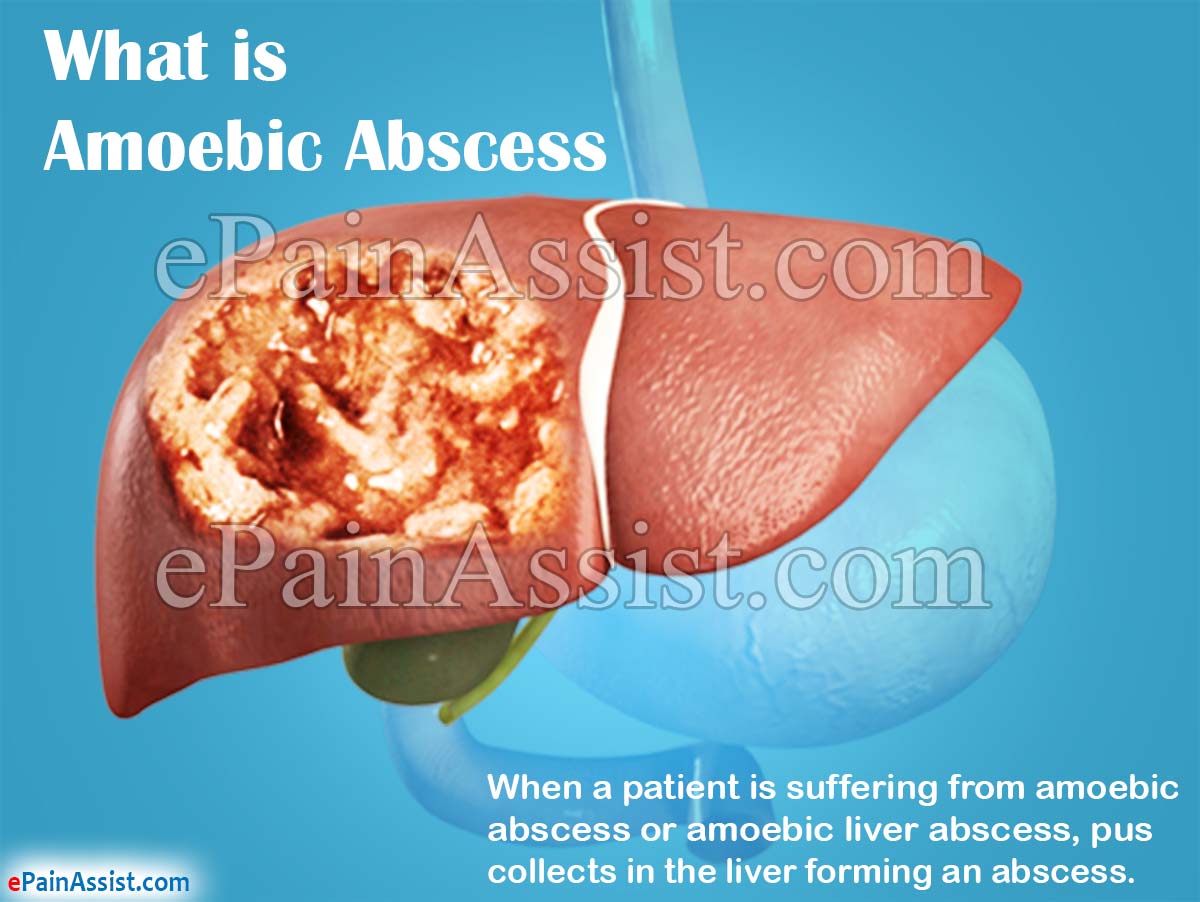What is Amoebic Abscess or Amoebic Liver Abscess?
Amoebic abscess or amoebic liver abscess is a condition that affects the liver which is a vital organ in the human body anatomy as it plays a very crucial role of detoxifying the body system. When a patient is suffering from amoebic abscess or amoebic liver abscess, pus collects in the liver forming an abscess. This happens when the liver is invaded by an intestinal parasite referred to as Entamoeba histolytica.

Amoebic abscess or amoebic liver abscess is a common space consuming inflammatory wound/lesion in the human liver. Diagnosing amoebic abscess or amoebic liver abscess is not easy. If not treated, amoebic abscess or amoebic liver abscess becomes complicated with high mortality and morbidity.
Causes of Amoebic Abscess or Amoebic Liver Abscess
As mentioned, amoebic abscess or amoebic liver abscess is caused by a parasite called as Entamoeba histolytica. This particular parasite reasons to intestinal infection called as amebic dysentery. Once the infection is manifested, it will move on from intestines to liver causing amoebic abscess or amoebic liver abscess.
Entamoeba histolytica is transmitted through the intake of food or water which is contaminated with cysts from faeces or through person to person contact. There are rare cases of transmission through oral or anal sexual contact. Once the parasite has invaded the body system, the victims or the patients are always unaware that they have a problem. It releases trophozites that find their way into the blood stream which are transported into the liver causing an amoebic abscess or amoebic liver abscess. Amoebic abscess or amoebic liver abscess takes time to manifest itself in the patient’s body. It can present itself after months or years of infection after eating contaminated water or food or after travelling to an endemic area.
Signs and Symptoms of Amoebic Abscess or Amoebic Liver Abscess
Amoebic abscess or amoebic liver abscess manifests itself either as acute or chronic according to the severity of the infection or the duration of the infection.
Most patients exhibit the following signs and symptoms of amoebic abscess or amoebic liver abscess:
- Abdominal discomfort that presents itself as a moderate pain on the right upper abdomen is the major symptom of amoebic abscess or amoebic liver abscess.
- Anorexia (i.e. lack of sleep) is another symptom of amoebic abscess or amoebic liver abscess.
- Chest pain is a common symptom of amoebic abscess or amoebic liver abscess
- Other symptoms of amoebic abscess or amoebic liver abscess includes cough, fever accompanied by chills.
- General malaise, diarrhea (though uncommon)
- Weight loss (not affecting all patients)
- Jaundice, Night sweats, Vomiting and nausea
- Constipation.
Prevalence of Amoebic Abscess or Amoebic Liver Abscess
Globally, there are around 40 to 50 million of people who are infected with Entamoeba histolytica. It has a high rate of mortality if not treated in good time. It is prevalent in developing countries around the world especially India, Asia, Africa, Mexico and Central and South America.
Tests to Diagnose Amoebic Abscess or Amoebic Liver Abscess
It is not easy to detect amoebic abscess or amoebic liver abscess because it takes years to manifest itself. Once a patient exhibits the symptoms indicated above, it is advisable to go for the tests to conduct a proper diagnosis.
- For amoebic abscess or amoebic liver abscess, one of thebestmethod to diagnose is through imaging by conducting:
- An ultra sound of the abdominal region is conducted to diagnose amoebic abscess or amoebic liver abscess.
- Computed tomography (CT scan) of the abdomen.
- Magnetic resonance imaging. The ultrasound, computed topography and magnetic resonance imaging for diagnosing amoebic abscess or amoebic liver abscess have been known to have a high affinity of conclusive results because of their effectiveness.
- Conducting a serology
- Conducting stool samples which are sent to the laboratory for screening.
- Using percutaneous diagnostic needle.
- Blood tests can also be conducted for diagnosing amoebic abscess or amoebic liver abscess.
- If a patient has diarrhea and other tests are negative, a colonoscopy is usually conducted to ascertain.
- Chest X-ray and liver scan is also done for diagnosing amoebic abscess or amoebic liver abscess.
Also Read:
